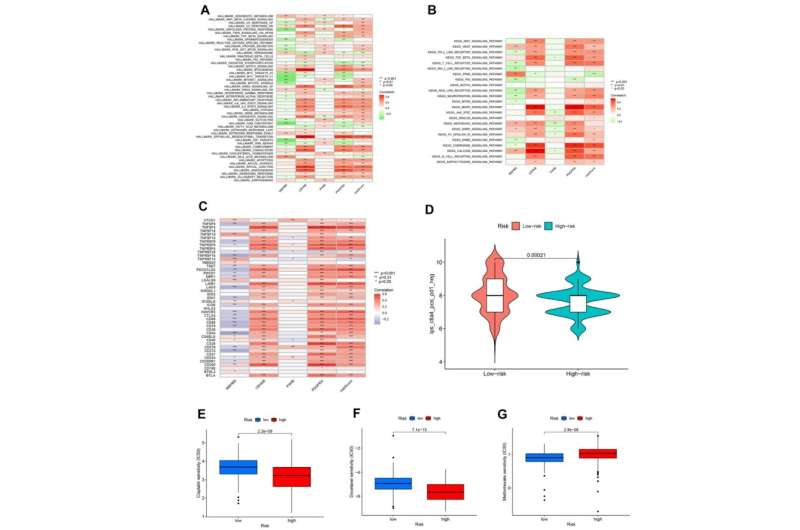This article has been reviewed according to Science X's editorial process and policies. Editors have highlighted the following attributes while ensuring the content's credibility:
fact-checked
proofread
Prognostic model development and molecular subtypes identification in bladder urothelial cancer

A new research paper titled "Prognostic model development and molecular subtypes identification in bladder urothelial cancer by oxidative stress signatures" has been published in Aging.
Mounting studies indicate that oxidative stress (OS) significantly contributes to tumor progression. In this new study, researchers focused on bladder urothelial cancer (BLCA), an escalating malignancy worldwide that is growing rapidly.
"Our objective was to verify the predictive precision of genes associated with overall survival (OS) by constructing a model that forecasts outcomes for bladder cancer and evaluates the prognostic importance of these genetic markers," the researchers explain.
Transcriptomic data were obtained from TCGA-BLCA and GSE31684, which are components of the Cancer Genome Atlas (TCGA) and Gene Expression Omnibus (GEO), respectively. To delineate distinct molecular subtypes, the researchers employed the non-negative matrix factorization (NMF)method. The significance of OS-associated genes in predicting outcomes was assessed using lasso regression, multivariate Cox analysis, and univariate Cox regression analysis. For external validation, they employed the GSE31684 dataset. CIBERSORT was utilized to examine the tumor immune microenvironment (TIME).
A nomogram was created and verified using calibration and receiver operating characteristic (ROC) curves, which are based on risk signatures. The team examined variations in clinical characteristics and tumor mutational burden (TMB) among groups classified as high-risk and low-risk. To evaluate the potential of immunotherapy, the immune phenomenon score (IPS) was computed based on the risk score. In the end, the pRRophetic algorithm was employed to forecast the IC50 values of chemotherapy medications.
"In our research, we examined the expression of 275 genes associated with OS in 19 healthy and 414 cancerous tissues of the bladder obtained from the TCGA database," the researchers summarize.
As a result, a new risk signature was created that includes four genes associated with OS (RBPMS, CRYAB, P4HB, and PDGFRA). The researchers found two separate groups, C1 and C2, that showed notable variations in immune cells and stromal score. According to the Kaplan-Meier analysis, patients classified as high-risk experienced a considerably reduced overall survival in comparison to those categorized as low-risk (P<0.001).
The predictive capability of the model was indicated by the area under the curve (AUC) of the receiver operating characteristic (ROC) curve surpassing 0.6. The model showed consistent distribution of samples from both the GEO database and TCGA data. Both the univariate and multivariate Cox regression analyses validated the importance of the risk score in relation to overall survival (P < 0.001).
According to this research, patients with a lower risk profile may experience greater advantages from using a CTLA4 inhibitor, whereas patients with a higher risk profile demonstrated a higher level of responsiveness to Paclitaxel and Cisplatin. In addition, methotrexate exhibited a more positive outcome in patients with low risk compared to those with high risk.
"Our research introduces a novel model associated with OS gene signature in bladder cancer, which uncovers unique survival results. This model can assist in tailoring personalized treatment approaches and enhancing patient therapeutic effect in the management of bladder cancer," the researchers conclude.
More information: Ying Dong et al, Prognostic model development and molecular subtypes identification in bladder urothelial cancer by oxidative stress signatures, Aging (2024). DOI: 10.18632/aging.205499


















